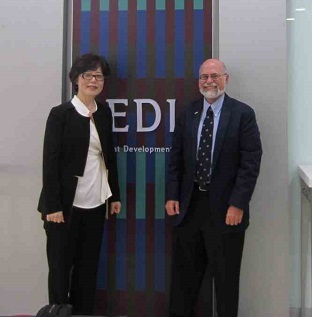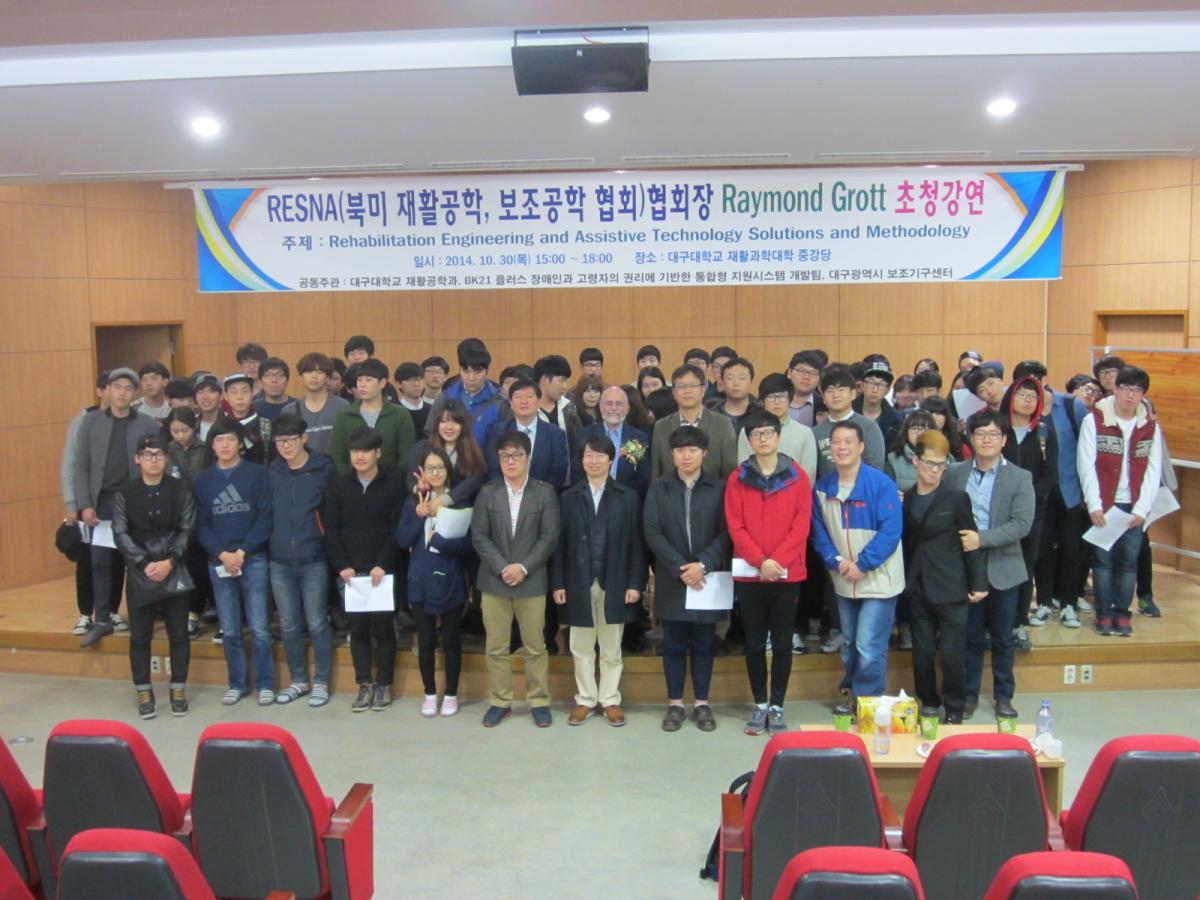Date: Monday, November 17, 2014
Category: Member News
I recently had the privilege of travelling to South Korea, representing RESNA and my AT program at
San Francisco State University. My visit was sponsored by the Employment Development Institute (EDI), directed by Dr. Eona Kim, which is under KEAD -- the section of the South Korean Department of Labor tasked with increasing the employment of people with disabilities (Dr. Kim and I are in the picture on the right).

I toured and gave a presentation at their annual AT Device Expo in Seoul, where I saw products from manufacturers we are familiar with in North America as well as locally developed solutions. The following day, I gave a presentation to EDI staff covering employment policies and related AT service delivery in the U.S., the movement for “Employment First” promoting the integration of people with disabilities into the mainstream workforce, and RESNA’s Certification program for AT professionals.
Through my conversations, I learned that we share the same goals, although we take different approaches. For instance, South Korea has a quota system requiring businesses to have 2.7% of their employees be persons with a disability. Meanwhile, all the costs of AT and other job accommodations are paid for by the government, which is definitely a better incentive than is offered in the U.S. On the other hand, our ability to provide custom AT solutions is more developed than theirs.

From Seoul, I went to the
University of Deagu at the invitation of Dr. Kun Min Rhee, Chair of the Department of Rehabilitation Science & Technology and former President of RESKO, RESNA’s sister organization in Korea. I had the opportunity to speak to a large group of students in the department’s undergraduate, Masters, and Doctoral degree programs in AT (photo at left). My talk focused on person-centered design and how lower-tech solutions can be just as important as high tech ones.
Throughout my stay in South Korea, I was impressed by peoples’ hospitality, their commitment to expanding the impact of assistive technology and rehabilitation engineering, and their awareness of and respect for RESNA. As RESNA’s President, I hope we can build on these types of connections to strengthen our international presence and collaborations.
Ray Grott, MA, ATP, RET